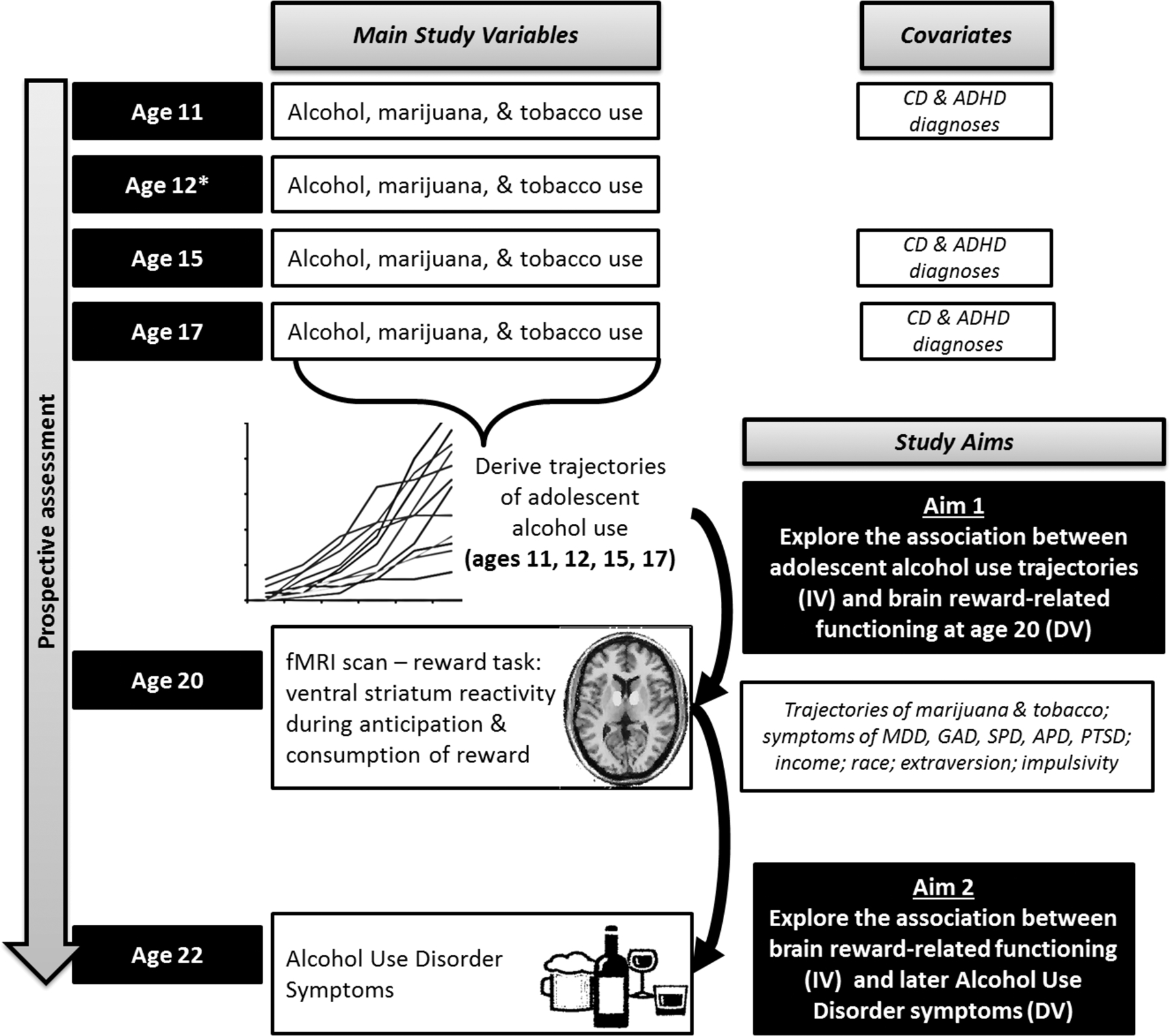Figure 1.

Hypothesized associations between trajectories of adolescent alcohol use, ventral striatum reactivity at age 20, and increases in symptoms of Alcohol Use Disorder at age 22.
Note. * At age 12, clinician consensus data were not available for the KSADS, thus we did not include Conduct Disorder or ADHD diagnoses from this assessment point. ADHD=attention deficit hyperactivity disorder; MDD=major depressive disorder; GAD=generalized anxiety disorder; SPD=social phobia; PTSD=post-traumatic stress disorder; APD=antisocial personality disorder; AUD=alcohol use disorder; DUD=drug use disorder; DV=dependent variable; IV=independent variable. To address Aim 1, we tested whether individual differences in the rate of alcohol use across adolescence from ages 11, 12, 15 & 17, based on latent growth curve modeling, were related to ventral striatum reward reactivity at age 20 assessed via fMRI. To address Aim 2, we tested whether individual differences in ventral striatum reward reactivity at age 20 were related to increases in symptoms of Alcohol Use Disorder at age 22 (i.e., controlling for symptoms of Alcohol Use Disorder at age 20 and overlapping DUD and APD symptoms at age 22). The indirect (mediated) effect of adolescent alcohol use on later symptoms of Alcohol Use Disorder at age 22 via ventral striatum reactivity at age 20 was also examined. Models controlled for other salient personality, psychiatric, and demographic confounds.
